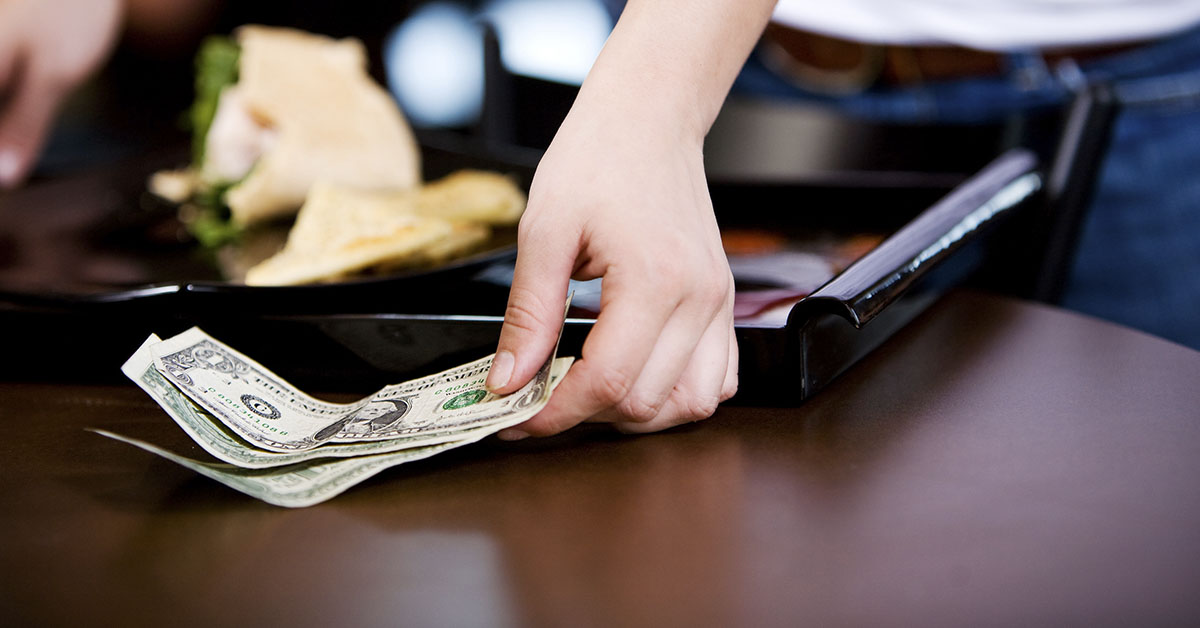Tipping has been a hot topic of debate for a while, and the recent comments by a server on TikTok have reignited this discussion. In her now-deleted TikTok post, she claimed that if you can’t afford to tip 20%, you ‘don’t deserve to eat out.’ Some argue that tipping is a way to reward good service, while others claim it is an essential income source for many service workers. In this article, we’ll delve into the controversy surrounding tipping, explore the impact of low server wages, and examine the practice of tipping across the United States. Is it fair to say that people who can’t afford to tip 20% “don’t deserve to eat out”? Let’s find out.
The Server’s Perspective

The controversy surrounding tipping intensifies when we consider the livelihoods of service workers. In the United States, the minimum wage for servers can be astonishingly low. The federal minimum wage for tipped employees stands at $2.13 per hour, provided that their tips make up the difference to meet the regular minimum wage. This practice, known as the “tip credit,” varies from state to state and can lead to servers earning meager hourly wages.
Lillie, a server who goes by the handle @mylasoasis_ on TikTok, has highlighted the harsh realities faced by many servers in the US. She revealed that her hourly wage is a mere $3.63, emphasizing that her earnings primarily come from tips. In comparison, the National Living Wage for those over 23 in the UK is £10.42. Lillie argues that, in this system, if you can’t afford to tip, you “don’t deserve to eat out.”
The Tipping Divide Across States

The debate surrounding tipping becomes even more complex when we examine the tipping habits of Americans across different states. Tipping in the United States isn’t mandatory, and the practice varies widely. The standard tip typically ranges from 15% to 20%.2 However, some states go above and beyond in their tipping generosity.
States like New Hampshire and Ohio see over 19% of tippers giving 25% or more as a tip. The South, known for its hospitality, also demonstrates this in its tipping habits. North Carolina and Alabama are among the states where a significant percentage of residents tip 25% or higher, with Iowa tying with Alabama. In contrast, California, followed by Oregon, has the lowest tipping rates, with a significant number of residents leaving 15% or less as a tip.
This regional disparity raises questions about the connection between minimum wages and tipping practices. For instance, California and Oregon pay their tipped employees full state minimum wage before tips, which is notably higher than the federal tipped minimum wage. In contrast, states with higher tipping rates, like New Hampshire and Ohio, pay their servers at or slightly above the federal minimum tipped wage. This raises the possibility that patrons in states with lower minimum wages may view tips as supplemental income rather than a necessity.
Tipping in Different Service Scenarios
Tipping norms extend beyond just dining out. They also encompass services like food delivery, rideshare, and hotel stays. When it comes to tipping for these services, the rules and expectations can vary.
In the context of carry-out orders, tipping is less common, with 71.1% of people choosing not to tip. However, in the case of food delivery, despite additional fees, a significant 91.4% of Americans still tip their delivery drivers. Even rideshare drivers who provide a service but don’t have direct customer interactions receive tips from 72.7% of passengers. On the other hand, hotel services, particularly housekeeping, receive fewer tips, with only 41.4% of guests tipping.
It’s interesting to note that younger generations, such as Generation Z, tend to tip less for delivery jobs and rideshare services. This indicates a shift in tipping behavior among different age groups.
The Tipping Dilemma
Tipping is a deeply ingrained practice in the service industry, and its controversy stems from the complex interplay of regional variations, wage disparities, and societal norms. There is no one-size-fits-all answer to the question of whether those who can’t afford to tip 20% “don’t deserve to eat out.” It’s a nuanced issue, with differing opinions among consumers and service workers.
As the debate continues, some argue for increasing employee wages as a way to replace tipping. The ongoing pandemic has also influenced tipping behavior, with over 65% of people feeling the need to tip more as a show of support for essential workers.
Tipping remains a subject of debate and discussion, and the tipping dilemma is far from being resolved. As a society, we must continue to examine this practice to ensure fair compensation for service workers while making dining out an enjoyable experience for all.
In the end, whether you believe tipping is an obligation or a choice, the debate reminds us of the importance of respecting service workers and their valuable contributions to the hospitality industry.
Keep Reading: Restaurant To Sue Customer After He Leaves $3,000 Tip On $13 Meal
Sources
- “Server says people who can’t afford to tip 20% ‘don’t deserve to eat out’.” Joe. STEVE HOPKINS. September 29, 2023.
- “The U.S. States With the Best and Worst Tippers [2022 Survey].” Upgraded Points. Alex Miller. June 5, 2023.

